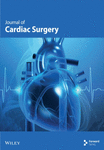Blood Conservation and Autotransfusion in Cardiac Surgery
Abstract
Blood conservation techniques of withdrawal of blood just before surgery, intraoperative blood salvage with Solcotrans (Solco Basle [UK] Ltd.), and profound hemodilution were used in 14 patients undergoing open heart surgery (group I) and compared with equally matched 14 patients who had profound hemodilution only during cardiopulmonary bypass (CPB) and acted as controls (group II). Group I patients required a mean of 255 mL of homologous blood per patient to achieve a target hemoglobin of 8 g/dL compared to group II patients who required a mean of 1,011 mL per patient (p = 0.0001). By using autologous blood there was a marked reduction in homologous blood exposure. Eight patients in group I and two patients in group II required no homologous blood. No adverse events occurred. In the process of conservation of blood in open heart surgery, we found the combination of the above techniques used in Group I patients to be safe and effective.




